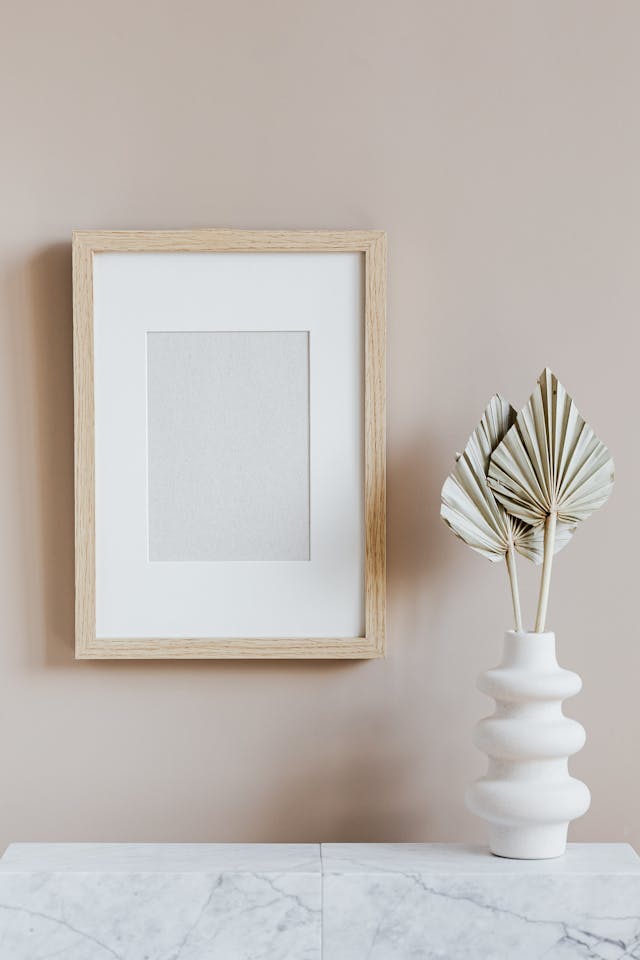
Minimalism and Frames – How to Choose Frames and Mirrors for Minimalist Interiors
Minimalism is about simplicity, harmony, and breathing space. But does that mean frames and mirrors have no place in such interiors? On the contrary. A well-chosen frame or mirror can subtly enhance a minimalist space without disturbing its balance. Here’s how to make the right choice.
1. Simplicity of Form
In minimalist interiors, frames should not draw too much attention. Choose simple, geometric shapes—rectangular or square—and avoid decorative or overly ornate designs. Thin profiles and clean edges work best.
2. Neutral and Natural Colors
Stick to white, black, grey, or natural wood tones. These hues blend seamlessly into minimalist spaces and allow other design elements to take center stage.
3. Quality Over Quantity
Rather than decorating every wall, choose one or two focal elements—a mirror above a sideboard, a single piece of framed art on an open wall. Let each element breathe and hold its own space.
4. Light and Reflection
Mirrors help bring light and depth into minimalist interiors. Frameless designs or those with narrow, understated edges are best suited to preserve a clean, open atmosphere.
5. Material Consistency
Match frame materials with the rest of the interior. If the space includes metal accents, consider a matte black aluminum frame. For wood-dominated interiors, choose a minimalist oak or walnut frame.
6. Showcase Contemporary Art or Photography
Minimalism embraces individuality. A carefully selected frame for abstract art or black-and-white photography can elevate the aesthetic without compromising the simplicity.
In Summary
Frames and mirrors can beautifully complement a minimalist interior—as long as they’re chosen with intention. Stick to simple forms, subtle colors, and balance, and they’ll seamlessly become part of the visual language of your space.